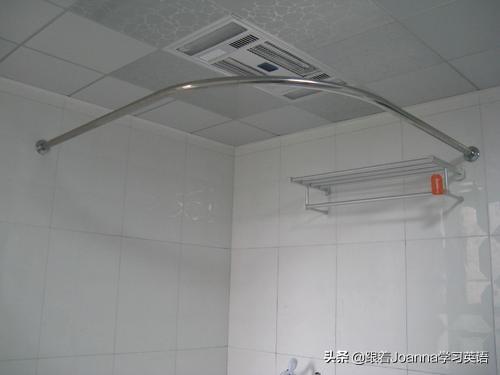Title: Curtain Rod Installation and Hardware Fitting
This article discusses the installation of curtain rods and hardware fittings. It provides a step-by-step guide for installing curtain rods, including measuring, cutting, and fitting the rod into the brackets. It also covers the selection of hardware fittings, such as curtain rings, tapes, and clips, to ensure that the curtains are properly supported and look their best. The article emphasizes the importance of using the correct tools and taking the necessary precautions to avoid damage to the curtains or hardware. It concludes with a few tips on how to maintain and clean the curtain rods and hardware fittings to ensure their longevity and performance.
Installing curtains is a common task in interior decoration, and the process can be relatively simple or complex, depending on the type of curtains and the specific installation requirements. One of the most crucial steps in installing curtains is the selection and installation of the curtain rod, which provides the structural support for the curtains and helps to define the look and feel of the space.
In this article, we will explore the process of selecting and installing a curtain rod, as well as fitting the necessary hardware to support the curtains. We will also provide some tips and tricks to help make the installation process smoother and more efficient.
Step 1: Selecting a Curtain Rod

The first step in installing a curtain rod is to select one that is suitable for your specific needs. There are a variety of curtain rods available on the market, each with its own unique style and functionality. When selecting a curtain rod, consider the following factors:
The size of your windows: Different windows require different sized curtain rods to ensure a proper fit and maximum coverage. Measure the width of your windows to determine the appropriate rod length.
The style of your curtains: Curtains come in a range of styles, from traditional to contemporary. Select a curtain rod that complements the style of your curtains and enhances the overall aesthetic of your space.
The budget you have set: The cost of curtain rods varies depending on their material, design, and brand. Set a budget to help you find a rod that fits both your needs and budget.
Step 2: Installing the Curtain Rod
Once you have selected a suitable curtain rod, it is time to install it. The process of installing a curtain rod depends on the type of rod you have selected. Here are some general instructions for installing a typical curtain rod:
Determine the placement of the rod: Measure the distance from the top of the window frame to where you want the rod to sit. Use a level to ensure that the rod is level across the window.
Install the brackets: Use screws or nails to attach the brackets to the wall or ceiling. Ensure that the brackets are securely in place and level with each other.
Insert the rod into the brackets: Carefully insert the rod into the brackets, ensuring that it sits level and straight. Adjust the brackets if needed to achieve a perfect fit.

Test the rod: Test the rod by hanging curtains on it to ensure that it is sturdy and does not wobble or bend. Adjust as needed to improve its stability.
Step 3: Fitting Hardware to Support Curtains
Once you have installed the curtain rod, you need to fit hardware to support the curtains themselves. This step is crucial for ensuring that your curtains look their best and function properly. Here are some common hardware options for supporting curtains:
Curtain Hooks: These are small metal or plastic hooks that attach to the top of the curtain panel. They provide a way for you to hang the curtain on the rod without damaging or marking it.
Curtain Rings: Similar to hooks, but they are usually larger and more decorative. They can be made from metal, plastic, or even wood and are often used to give a more traditional or elegant look to curtains.
Curtain Tapes: These are adhesive-backed strips that you can apply directly to the back of the curtain panel. They provide a quick and easy way to hang curtains without requiring any additional hardware. However, they are not as strong as hooks or rings and may not provide as much support for heavier curtains.
Conclusion
Installing a curtain rod and fitting hardware can seem like a daunting task at first, but with careful planning and execution, it can be a simple and rewarding process. By following these steps and taking into account your specific needs and preferences, you will be able to create a beautiful and functional curtain arrangement that enhances the look and feel of your space.
Articles related to the knowledge points of this article:
Goose Down: A Natural and Sustainable Source of Warmth
Title: The Art of Tying a Bow Tie: A Comprehensive Guide to Creating a Perfect Knot
Long-style womens down jackets: Fashion and functionality in one
Title: The rise of brand-name down jackets in the fashion industry



